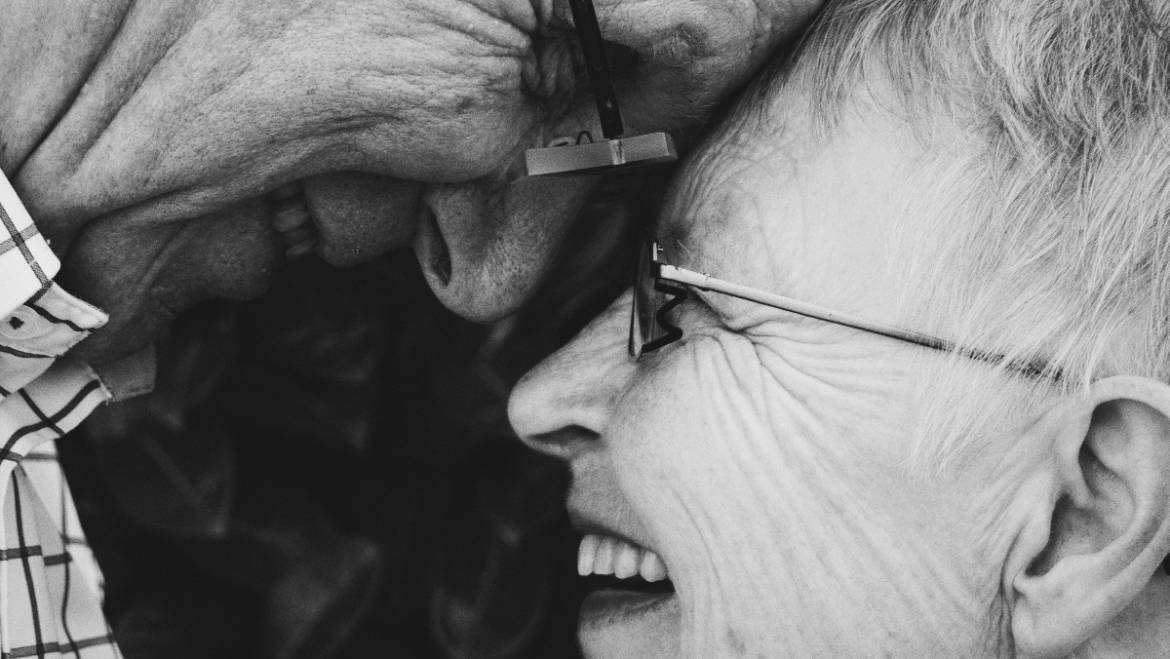With age, vision disorders in the elderly develop. In addition to normal presbyopia in all middle-aged individuals, different visual impairments mostly affect the elderly. There are three main pathologies that can lead to an important loss of vision: cataract, AMD and glaucoma. These diseases have different symptoms that it is important to know to ensure an early diagnosis that will stop or even stop the visual loss, and thus preserve the autonomy of the elderly patient.
Aging and vision disorders in the elderly
Vision disorders in the elderly are very common. The sight of the human being evolves naturally towards presbyopia, due to the loss of suppleness of the progressive lens with age. This phenomenon, which begins at birth, is particularly felt around 45 years of age, when the lens (responsible for clear vision at all distances) modifies its curvature less and less well and the area of sharpness passes a distance greater than that Which is normally adopted to read (30 to 40 cm). At 70, the area of sharpness even passes two meters. Vision disorders in the elderly are therefore very present
These disorders of vision in the elderly are related to the normal process of aging of the eye and are corrected by reading glasses. Vision disorders in the elderly remain uncomfortable, as these glasses only corrects vision, the person must remove them to see from a distance or use multifocal glasses.
If presbyopia increases with age, other vision disorders in the elderly exist. The most widely known pathology of vision is cataract.
Cataract, a vision disorder in the elderly treated by surgery
The cataract is characterized by a progressive decrease of the sight, generally affecting the vision from afar. This is also the lens (lens inside the eye) that is responsible. It opacifies with age and leaves less light passing, decreasing the visual acuity, until a low vision can not be corrected by glasses or contact lenses. This vision disorder in the elderly affects a person over 65 years of age in five, three out of five from 75 years and two thirds of those over 85 years.
Vision problems in the elderly with cataracts make it difficult to watch television and read.
Colors may appear more dull (although the brain tends to compensate). These disorders of vision in the elderly give a sensation of fog and sensitivity to light.
An operation performed by an ophthalmologist allows the elderly patient to regain a correct vision and a certain autonomy. Surgery involves replacing the crystalline nucleus with a plastic intraocular lens. The operation usually takes place under local anesthesia and lasts from 10 to 30 minutes. The patient can go home the same day or the next day. Some 200 000 people are operated every year in France for this vision disorder in the elderly.
Macular degeneration: a disorder of vision in the elderly frequent (AMD)
Age-related macular degeneration (AMD) is a disease of the retina, the leading cause of blindness in people over 50 years of age. This disorder of vision in the elderly affects the macula, that is, the part of the retina responsible for central vision. The progression of this vision disorder in the elderly is slow and usually affects only one eye at a time. In France, about 12% of people aged 65 to 75 have AMD.
There are two forms of this vision disorder in the elderly. Dry AMD in 80% of cases is characterized by a gradual and relatively slow decrease in central vision. The affected person still sees the colors, but the details become more and more blurred. Early signs of this vision disorder in the elderly are difficult to detect. Wet AMD is due to the appearance of choroidal neovascular (CNV). Loss of vision is much faster than in dry form. The central part of the field of view decreases and may even disappear entirely, leaving a blind zone. The warning signs of this vision disorder in the elderly are straight lines that undulate, a black spot that appears in front of the eye in the center of the field of vision and difficulty reading the words, perceived as irregularly blurred.
There is no treatment for dry AMD. The progression of the wet form of this vision disorder in the elderly can be slowed or stopped by the oculist if it is detected before too much loss of vision.
Glaucoma or a vision disorder in the elderly called “tunnel vision”
Glaucoma is a degenerative disease reaching the optic nerve and most often related to an increase in intraocular pressure. This vision disorder in the elderly can cause total and irreversible vision loss due to the destruction of the optic nerve. In general, there are two forms of this disorder of vision in the elderly.
Chronic open-angle glaucoma (GCAO), which results in progressive loss of vision at the periphery of the visual field. This form, which represents 90% of the cases (ie some 1.7 million French), can be asymptomatic for ten to twenty years, until lateral vision deterioration. If this vision disorder in the elderly is detected in time, it is possible to slow down its development, usually through a lifetime treatment based on eye drops administered daily.
In some cases, the doctor may decide to perform laser surgery or surgery to reduce intraocular pressure. It is therefore important to regularly consult an ophthalmologist (every two or three years) from the age of 40, to allow an early diagnosis, impossible otherwise, because at the beginning of the disease, one does not feel pain or loss of vision.
Acute angle closure glaucoma (GAFA) is rarer, but much more severe. This vision disorder in the elderly is an ophthalmologic emergency. It results in sudden, sudden dull pain, rapidly decreased vision, accompanied by the perception of colored halos, nausea and headaches. Without immediate intervention, it can lead to blindness.
Article from http://www.medipages.org/

